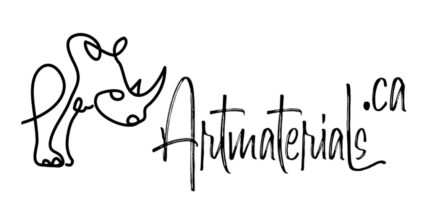- Vous n'avez aucun article dans votre panier
- Poursuivre les achats

Cette fois-ci, nous parlerons de comment choisir les brosses en soies de porc. Comme toujours, nous aborderons de nombreux aspects : utilisation, sources, avantages et questions éthiques.
Quelle est la particularité des poils de porc ?
Hog bristle brushes, as the name suggests, are crafted from the hair of pigs. These brushes possess distinct characteristics: the majority of the bristles feature split tips, a wide and robust body, and a resilient, “springy” stiffness. The split ends enhance paint retention and facilitate a smoother application, making them particularly advantageous for heavy-bodied paints, especially in oil painting and varnishing.

Another crucial factor to consider is breed. While some sources may suggest that certain breeds produce superior hair, the reality is that for hog bristle brushes, the ideal source is actually non-specific. The stiffest and most durable bristles are derived from wild or free-range pigs. Additionally, the quality of the bristle improves when pigs are raised in colder climates.
Le plus grand importateur de soies de porc est la Chine, mais la qualité est très discutable dans la plupart des cas. La deuxième place revient à l'Allemagne.
Qualité studio ou qualité professionnelle
Les meilleures brosses en soies de porc
As previously noted, the quality of hog-bristle brushes can vary significantly for various reasons. Each brush, regardless of its quality, serves a specific purpose. Let us now explore how to select a brush that aligns with your goals and expectations. While the most effective hog-bristle brushes typically feature a well-defined split at the tip, the finest and most premium options contain no more than 20% split-ended hair. These brushes exhibit exceptional flexibility, returning to their original shape after bending, demonstrating a remarkable ability to spring back.
Additionally, the length of the brush hair often correlates with its cost; however, longer hair is not a necessity for all applications. Longer bristles tend to provide a softer application, making them suitable for certain techniques. Conversely, if you are working with a rough style or aiming for precise flat blending, shorter-haired brushes may be more effective.
Brushes that feature 80% flagged ends are typically less expensive but can still be quite functional. They are particularly well-suited for techniques such as dry brushing or casual painting, as they hold and release paint evenly. Soft-bristled hog brushes or those with a high degree of split ends are ideal for varnish application or overall glazing. You can also find lower-grade brushes in this category at construction supply stores.
Les pires brosses en soies de porc
The lowest-quality brushes often have very stiff bristles. This occurs when manufacturers prioritize profit by reusing the same hair multiple times. For instance, consider a long strand of high-quality hair: the upper portion may be allocated for a premium brush, while the remaining length is typically repurposed in other industries for products like ropes, threads, or cushion fillings. However, some manufacturers choose to cut this leftover hair and sell it as brush material, significantly increasing their profit margins. Unfortunately, these inexpensive brushes are ineffective for painting purposes. They may be suitable for applications such as glue or certain crafts, but they do not perform well in artistic painting.
Pinceaux en soies de porc pour l'huile
Hog bristle brushes are specifically designed for use with oil paints. They excel in underpainting, blending, and spreading oil paints, outperforming other brush types. Other brushes typically lack the stiffness and capacity to hold heavier paint effectively.
Toutefois, pour les travaux très détaillés, après avoir utilisé des brosses en soies de porc pour la stratification initiale, certains artistes peuvent préférer les brosses en soies de porc. synthétique ou brosses en martre kolinsky.
Pinceaux en soies de porc pour l'aquarelle
We don’t recommend the use of hog bristle brushes for watercolor painting, as they may cause damage to the paper and compromise your artwork. Instead, we recommend opting for softer alternatives, such as Écureuil, Faux écureuil, Kolinsky, Faux Kolinsky, Chèvre blancheou Sable Mix brushes.
Pinceaux en soies de porc pour l'acrylique
Traditionnellement, nous avons tendance à penser que les outils qui fonctionnent bien pour l'huile fonctionneront également pour l'acrylique. Mais ce n'est pas tout à fait vrai. Les peintures à l'huile contiennent apparemment de l'huile, tandis que les peintures acryliques sont à base d'eau. Et les pinceaux en soies de porc, comme tous les autres pinceaux naturels, absorbent l'eau. Cela rend la peinture acrylique inconfortable car (1) les poils deviennent plus mous et imprévisibles (2) l'eau de la virole peut affecter le processus de peinture.
Pour la peinture acrylique, nous recommandons Brosses en faux poils de porc au lieu de cela.
Pinceaux en poils de martre pour la détrempe
Voir l'utilisation de l'acrylique.
Questions éthiques
Hogs and pigs are not considered rare or at-risk species and are widely farmed across the globe. Additionally, high-quality hog bristle brushes are known for their durability, often outlasting synthetic brushes. Since hog bristle is a natural product, these brushes are also fully biodegradable.
Nettoyage et entretien
Hog bristle brushes are highly durable and can withstand harsh cleaning solutions effectively. For cleaning after oil painting, you may use regular vegetable oil, turpentine, solvents, dishwasher soap, or bar soap.
We suggest using a special ENL: Oil-based brush cleanser. Il nettoie en douceur vos brosses et les soigne en quelques secondes.
Après une peinture acrylique ou à la détrempe, vous pouvez utiliser simplement de l'eau et du savon, comme par exemple ENL: Cleansing Soapqui, grâce aux argiles naturelles et à l'huile d'olive, élimine les particules de peinture et prolonge la durée de vie du pinceau.
We hope that this brief overview has provided you with valuable insights on how and when to select hog bristle brushes.
(c) ArtMaterials.CA




